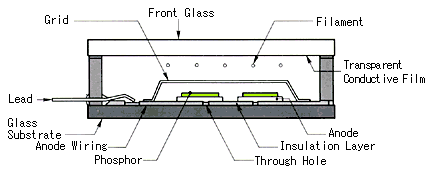Retro-Gaming with Coleco
Coleco enters the fray

Looking to bounce back from this disparity, Coleco crafted a deal with Nintendo, securing exclusive rights to bring their arcade hit, Donkey Kong, to the kids at home. They eventually produced a Donkey Kong cartridge for the Colecovision game console, but decided to add to their own line of handheld sports games by creating mini arcade units for both this game and Pac-Man. These were designed to copy the look and feel of the real thing, from the little joystick down to the art of the marquee and cabinet panels. Finally, the arcade had hit home, and with it, Coleco had hit pay-dirt.
The styling of each unit mimicked a real arcade machine with a wide base for the controls and a tall cowl protecting the game screen. They were light, yet sturdy units that were powered either by an additional power pack from Coleco called PermaPower, or by 4 'C' batteries, although these would get used up somewhat quickly. What really set these games apart from previous handhelds was the graphics and sound. They wouldn't be considered great by today's standards, so don't get rid of your Gameboy Advance just yet, but they offered a reasonable, if not simpler, facsimile of the actual game.
Construction was also, by necessity, kept simple. We sacrificed one unit for our showcase to see what these were made up of. Removing the upper cowl and screen reveals a particle board with wires running to the batteries for power and a plastic tympanic speaker for the sound. Although limited in range, the speaker was quite capable in producing loud game sounds - sometimes to the detriment of some kid's parents. The jewel of the unit was the VFD display, short for Vacuum Fluorescent Display. VFD screens are commonly used in VCRs, stereos, etc. and provide a bright green light with a good contrast.

VFD is composed of three basic electrodes; the Cathode (Filaments), Anodes (Phosphor) and Grids under a high vacuum condition in a glass envelope. The Cathode consists of fine tungsten wires which are coated by alkaline earth metal oxides which emit electrons. The Grids are a thin metal mesh which control and diffuse electrons emitted from the Cathode. The Anodes are conductive electrodes on which the phosphor is printed to indicate characters, icons or symbols. Electrons emitted from the Cathode are accelerated with positive potential applied to both the Grid and Anode, which upon collision with the Anode excites the phosphor to emit light. The desired illuminated patterns can be achieved by controlling the positive or negative potentials on each Grid and Anode, and the game's colors are laid out on a thin sheet that lays across the top of the glass.
So there you have it. Now, for some show and tell, we've got our personal collection for display. Some units, such as Pac-Man and Donkey Kong I have owned since they came out, back in 1981. Overall, they are in good shape, although the decals on Pac-Man show some mottling where the glue has seeped through, a common issue with these units. Others have been obtained over the years (thank you, Ebay!) and are now ready for us to present.












